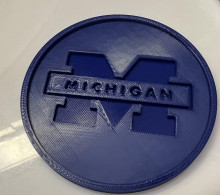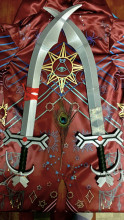Happenings from the Shapiro Design Lab.
Lab Notes

Posts in Lab Notes
Showing 91 - 100 of 231 items

- Sarah A Weingartz
Santa’s upgrading the gifts with a “little brother” rivalry!
•
- Andrew Benvenuto
A fourth-year medical student at University of Michigan Medical School and member of the Gold Humanism Honor Society (GHHS) helps to lead the Heartbeat in a Bottle Project in conjunction with the Michigan Medicine intensive care unit and the Internal Medicine Residency program.
•
- Erica Ervin
Undergraduate students! Apply to the Intern position for the Design Lab. The application deadline is Sunday, January 22 and all applications will be reviewed on a rolling basis. Fill out the google form and upload CV/resume using the link located at the bottom the post.
•
- Erica Ervin
Graduate students! Apply to the Program Assistant position for the Design Lab. The application deadline is Sunday, January 22 and all applications will be reviewed on a rolling basis. Fill out the google form and upload CV/resume using the link located at the bottom the post.
•
- Sarah A Weingartz
Gifting made easy with the help of the Design Lab
•
- Erica Ervin
Undergraduates can apply to be a part of the Design Lab Team for the 2022-2023 academic year. The application deadline is Monday, September 5 and all applications will be reviewed on a rolling basis. Fill out the google form l and upload your resume using the link located at the bottom the post.
•
- Veronica Sikora
Veronica Sikora, a recently-graduated MCDB and Phiosophy student, discusses the creation of NextGen-Ethics, her senior thesis podcast, which she created with assistance from the Shapiro Design Lab.

- Stefanie Marie Reamer
Design Lab intern Stef details the process of printing and piecing together a multi-part 3D model printed on the new Fusion F410 printer in the workshop.
•
- Erica Ervin
Information about winter term hiring for the Design Lab Internship program, including responsibilities and qualifications, as well as a link to the online application.
•
- Daniel Braden Calco
Creating wall all with custom 3D printed flush mount